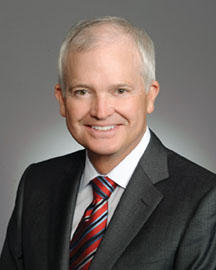It’s been six years since Congress passed legislation, known as the Dodd-Frank Wall Street Reform and Consumer Protection Act, to overhaul the financial lending industry in the wake of the mortgage crisis and subsequent recession.
The legislation, which is still being rolled out, created a wide range of new regulations for banks within its more than 10,000 pages, and established the Consumer Financial Protection Bureau (CFPB) charged with preventing predatory lending and making it easier for consumers to understand mortgage terms.
The act also directed federal agencies to ensure the stability of large financial institutions deemed “too big to fail” whose collapse would devastate the economy.
According to state and national banking groups, however, a large portion of the provisions have had “trickle-down effects” on small community banks that had little to do with the mortgage crisis yet are now dealing with added costs for reporting and other requirements that if not amended will end up hurting consumers.

“This regulatory burden with all the attendant costs for staffing and so on is taking away resources that the banks would much rather be directing toward the communities that they do business in,” Rodney Brown, president and CEO of the California Bankers Association (CBA), told the Business Journal.
Earlier this year, a legislative package supported by Republican Alabama Sen. Richard Shelby, chairman of the United States Committee on Banking, to amend provisions of the act failed to pass in Congress. The legislation brought forward last year was backed by the CBA and the American Bankers Association (ABA).
Rodney Brown, president and CEO of the California Bankers Association (CBA) (Photograph provided by CBA)
Nevertheless, banking groups are still holding out for possible reforms. They acknowledge, however, that it may take some time for lawmakers to take a bipartisan look at the legislation, particularly during the U.S. presidential election season.
“We’re hoping that, as time goes by, the partisan view of Dodd-Frank dies down and we can start asking the practical questions and dealing with the practical issues,” said Wayne Abernathy, executive vice president of policy and regulatory affairs for ABA.
One area in need of reform, he said, is the “qualified mortgage” rule, which went into effect in 2014 and requires that creditors make a “reasonable, good faith determination of a consumer’s ability to repay any consumer credit transaction secured by a dwelling and establishes certain protections from liability,” according to the CFPB.
Abernathy said the rule “makes a lot of sense” on the surface but is “complicated to administer” and prevents banks from tailoring loans to a consumer’s financial situation.
The ABA last year proposed changing the definition of a qualified mortgage to include any mortgage a bank holds on its books, loosening standards for banks to allow certain loan types, such as for people who are rich in assets but have seasonal or sporadic income, he said. Abernathy added that such changes should be considered to ease the burden on small banks and help stabilize mortgage markets.
“They’re keeping it on their books so there’s a very strong incentive for the bank to get it right and make sure it can be paid off,” he said. “Having that kind of a definition allows the bank to say ‘let’s find the approach that will work for your circumstances.’”
Some positive aspects of the Dodd-Frank Act, Brown said, include provisions that put in place simulations to ensure large Wall Street banks can deal with stressful situations.
However, increased capitalization, compliance-related reporting, credit reserve reviews and risk management requirements mostly intended for large financial institutions have spilled over the entire industry, particularly impacting small community banks, he said.
Brown said many banks have had to double the number of staff positions just to read, digest and understand the legislation’s expectations and then to conduct business that is in compliance with the added regulations.
“It’s very, very challenging for a half-a-billion-dollar asset community bank to shoulder the kind of added reporting and compliance that is required and trickle down from what was really intended from institutions much, much larger,” he said.
While some U.S. presidential candidates have tried to politicize the issue by supporting even more regulations and proposed breaking up big banks, Brown said such a move would be irresponsible in a time when the U.S. economy is rebounding.
“I think a lot of progress has been made,” he said. “Layering on more regulation rather than fine-tuning the regulations that are on the books would be imprudent.”
Brown added that, despite economic turmoil in other countries, the United States economy has improved greatly since the legislation passed in 2010. He pointed out that the nation would be at a “competitive disadvantage” with other countries if large banks were broken up into smaller financial institutions.
“As we try to do business in a world economy, we would be very disadvantaged because we would have smaller financial institutions trying to meet the needs of our businesses that require credit, payment and investment management services,” he said. “The community would tell you that they would rather have larger, well-managed and effectively run competitors as well as regional and community banks to compete against.”
